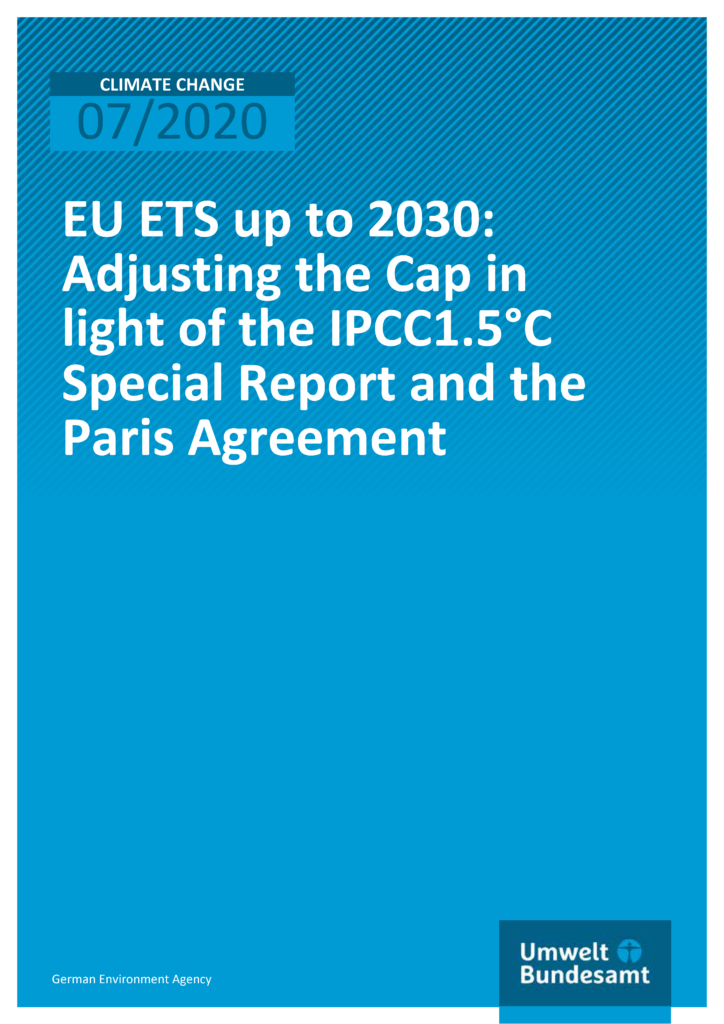EU ETS up to 2030: Adjusting the Cap in light of the IPCC 1.5°C Special Report and the Paris Agreement

- Title
- EU ETS up to 2030: Adjusting the Cap in light of the IPCC 1.5°C Special Report and the Paris Agreement
- Author(s)
- Aleksandar Zaklan, Jakob Wachsmuth and Vicki Duscha
- Organisation
- German Environment Agency
- Year
- January 2020
- Type
- Report
- Length
- 33 p.
- Keywords
- Climate targets, Industrial emissions
Abstract
We derive an EU ETS budget compatible with the Paris Agreement based on cost-effectiveness criteria, using a target of limiting global warming to 1.5 degrees Celsius with a 50 – 66% probability, and translate it into a cap reduction path. We derive a budget of about 30 Gt CO2e for the EU ETS for 2016-2050. We show that already about 25 Gt CO2e will be used until 2030 under current ETS parameters. We also show that cumulative GHG emissions of ETS sectors in the two most ambitious 1.5-degree-scenarios in the EU Commission’s Strategic Vision amount to 33 Gt CO2e until 2050, about 10% higher than our optimistic cost-effective budget. Thus, meeting the 2050 EU ETS budget under current 2030 parameters would require drastic – and probably unrealistic – additional efforts after 2030. A smoother and more credible emission pathway can be achieved through a cost-effective scenario reducing the cap by 61% until 2030, compared to 2005, corresponding to an LRF of 4.0% for 2021-2030 (5.8% if the LRF can only be adjusted in 2026). We show that a first step towards aligning the ETS cap with the Paris Agreement would be to use the potential for additional GHG savings due to recently increased EU targets for renewable energy and energy efficiency. The minimum required adjustment is to increase the reduction target for ETS sectors to at least 50% for 2030, compared to 2005, from currently 43%. This corresponds to a LRF of 2.9% for 2021-2030 or 3.5% if the LRF can only be adjusted in 2026. National coal-phase out policies planned in a number of EU member states until 2030 provide further cap adjustment potentials. If phased-out capacities are fully substituted by renewable electricity, emissions in ETS sectors could decline by 57% through 2030, approximating our cost-effective scenario and translating into an LRF of 3.6% for the period 2021-2030 or 4.9% if the LRF can only be adjusted in 2026.










